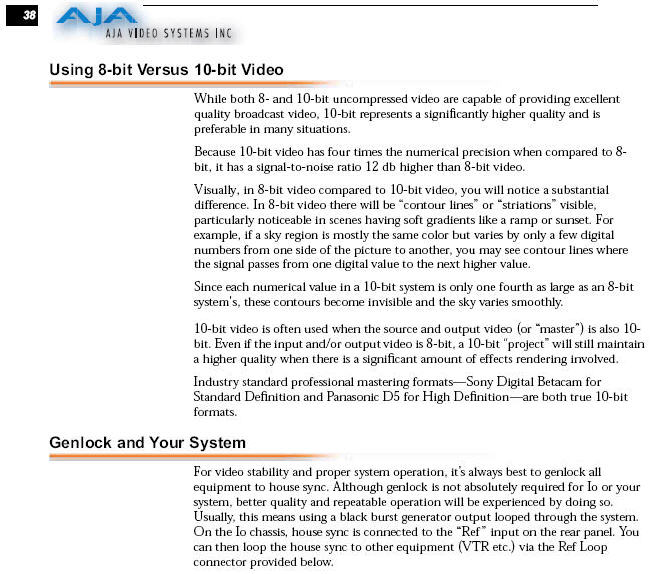Video Migration in the Preservation LaboratoryDigital Video Capture
YUV vs RGB Selecting the color values to be used in capture is critical to maintain the visual integrity of its appearance. The concept is to capture the image stream in a format that is wider than the original. Secondarily, is to apply no limitation to the signal. The most common limitation is to make the signal "broadcast legal." This means that the signal is compressed to conform to standards for playback via broadcast. |
In the following image, is an image capture from the same AJA Io System PDF, p 38; it defines some of the major advantage to using 10-bit capture of the analog video signal. 8-bit RGB has 256 steps for each of the red, blue and green channels, while 10-bit scaling has 1024 steps. This allows significantly more RGB values (steps) for the incoming signal to be divided into by the ADC. The problem described on p 38-39 (below) is due to the natural compression of ITU-BT 601 (standard) video where the full 256 steps available in 8-bit digital scaling are reduced to 219 steps due to the definition of the ITU 601 standard. This is because of the blackest black is defined as RGB-step 235, rather than 255, and the whitest white is plateaued at RGB 16, rather than RGB 0; is is a range of (235-16) 219 RGB-steps, a significant compression. White the loss of RGB step in the whites is problematic, the loss of 19 steps in the dark is profound. |
 |
